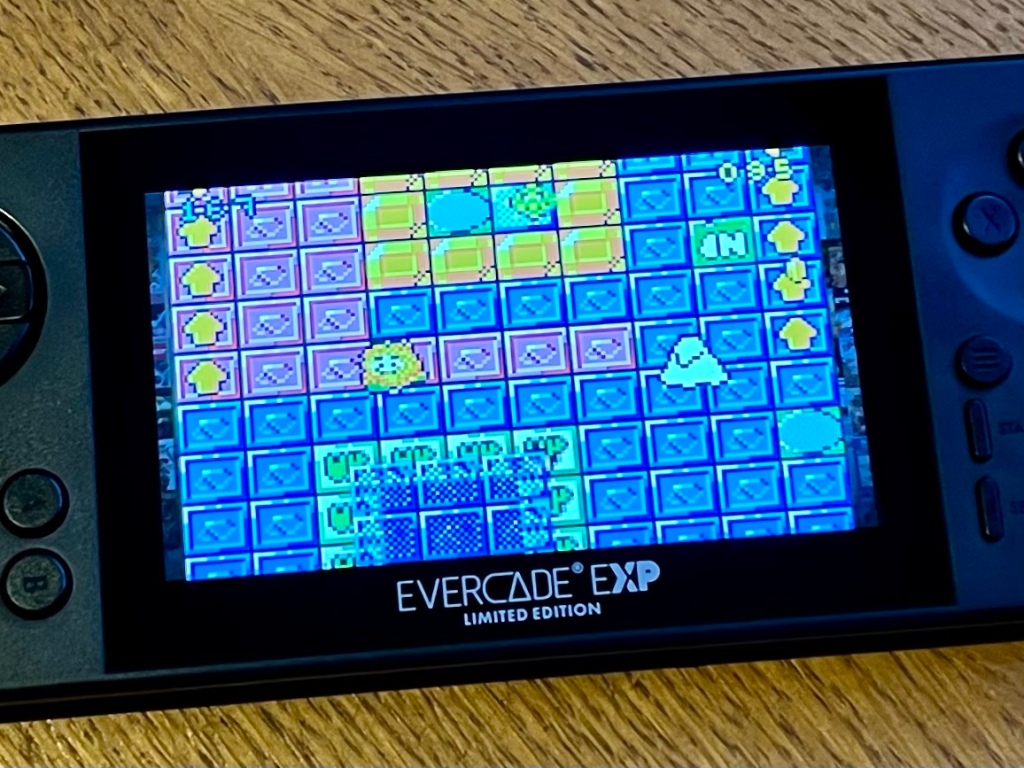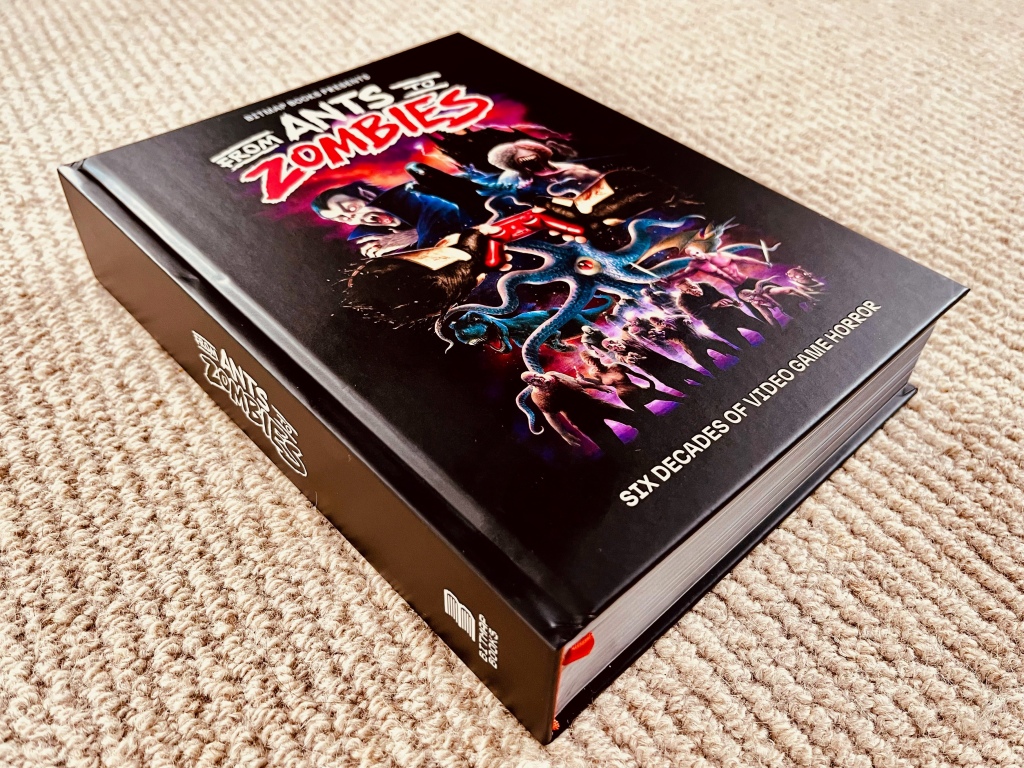Back again for our regular Sunday roundup of quick-fire reviews and impressions of everything under the spotlight at Retro Arcadia this week, old and new and a bit of both…

I’ll start this time with Super Skweek, an action-puzzler by Loriciel from 1991 that came out on all sorts but I know best from the Atari Lynx, although I must give a quick shoutout to my friend Nick Jenkin and his recent YouTube coverage of the Amiga version for reminding me it existed at all! And as luck would have it, I then remembered it’s also on the Atari Lynx Collection 1 for Evercade, so this week I’ve been getting seriously reacquainted on my EXP handheld! It’s the follow-up to Skweek from 1989, and once again features a fuzzy character of the same name on a mission to save his sweetheart, Squoosh, which involves navigate tons of maze-like, grid-based levels filled with enemies to get rid of, obstacles to avoid and environmental puzzles to solve, while strategically painting the ground as you go to progress. It’s a bit like Q*Bert meets Chip’s Challenge, which is a winner in my book, and while I’m keen to also try some of those other versions now I’ve been hooked again, I reckon the Lynx one, played on a modern handheld, is the way to go, with some fantastically colourful graphics and one of its catchiest theme tunes supporting some properly addictive gameplay!

The Innsmouth Case is a Lovecraft-inspired text adventure I picked up for next to nothing in a Nintendo Switch sale ages ago. It’s presented as an interactive novel, or a choose-your-own adventure without the dice, where you play a modern day but old-school film noir-style private detective hired to find a missing little girl, an enigmatic mystery that takes you to the remote fishing village of Innsmouth, where nothing’s as it seems and just making it out alive and vaguely sane soon becomes your priority! It starts out pretty sedate and perfectly atmospheric, with easy to read text accompanied by minimally-animated and suitably cartoon-gothic illustrations, with frequent dialogue choices slowly funnelling your adventure before then spreading it all over the place, seemingly with an ending for every choice you make after a while! It’s easy to go back and try the last bit again if things don’t work out how you planned but the problem is there’s so little planning – just trial and error – and repeating soon becomes as tired as the “unique” blend of horror and humour that I really didn’t find funny in the slightest. I never did find the girl either, but I did survive, after a dozen or so eldritch deaths, and after a couple of hours that was a good enough ending for me. Sorry little girl!

I’m still not sure about buying the new Sonic Superstars – seems very co-op focussed to me judging by the promotional material, which really isn’t my thing. I did, however, just buy Sonic Mania for £6.99 in a Switch sale, and now I’m done with Sonic the Hedgehog 2 for the Sega Master System, that will conclude my current curated journey through twenty 2D Sonics, which has now gone over a year! I’ll try and get to that next week but in the meantime I’ve had a good time with this version of the sequel from 1992 – a unique experience, distinct to its Mega Drive or Genesis counterpart, except, of course, that you were also out to thwart Dr Robotnik again, and as usual, across impressively fast-paced and vibrant zones filled with platforming and a bit of exploration too. There are seven in total, each split into three acts, where you’ll face-off against a boss in the third; these are a bit underwhelming, and I do miss the spin-dash, but apart from being a bit mean-spirited in a very 8-bit way, I really liked this one – way more than I expected to! It’s a proper Sonic, even if it’s not “proper” Sonic 2 despite it coming first!

A very long time ago, we went to a holiday park in the southwest of England where my brother and me were on an arcade game every night that had you playing a robber moving around a multi-screen mine on ladders, elevators and mine carts, collecting bags of money to take to the surface in a wheelbarrow while avoiding the guards. Could never remember the name of it though, until a very long time later when I came across Bagman, a mostly (officially at least) unconverted arcade game by Valadon Automation in 1982. There have been some very cool reimagined homebrews much more recently though, and last week this Amiga remake by developer JOTD, which seems to be have been teased for ages, also got a final release! It’s based on original game code ported to the Amiga, so you’ve got pretty much arcade perfect, also thanks to a decent job on the game’s AI and pacing too. And what a perfect arcade game! Way more depth to these mines than appears on the surface, as you strategically pick up and drop bags to briefly out-run (or whack) the guards before going back to get them a bit closer to the surface. Some great tricks to learn too, like hanging off hooks and dropping into passing mine carts for a risky but rewarding ride, that’s all way ahead of its time, as are some excellent character animations and sampled sounds, as well as the fiendish difficulty matched by pinpoint controls, so it’s generally your fault when it all goes wrong! Fantastic conversion that you can grab from itch.io right here.

Last up this week, and probably what’s been keeping me occupied the most, is The Legend of Zelda: Oracle of Ages, originally released on the Game Boy Color in 2001 but recently made available as part Nintendo Switch Online Game Boy library, together with its Oracle of Seasons counterpart. They were actually supposed to be part of a threesome, each interconnected but playable in any order, although the order would affect elements of what happened in the next. However, that turned out to be a nightmare, so we ended up with two linked (or Linked) games that still follow this concept, and only reveal the full plot once you’ve played both. Which I’ll attempt to do and report back on later! First though, Oracle of Ages sees Link travelling between the past and the present using a magic harp, which I think makes this a more puzzle-based experience than the more action-focussed Seasons, although from what I can tell so far, if you’ve played Link’s Awakening on the Game Boy then they’re both familiar territory. What I can definitely say about Ages, though, is it’s incredible! You’re moving Link backwards and forwards across varied over-worlds and through dungeons to find eight essences of time that will help you defeat the sorceress behind all this time trouble. I’ve got three of them so far, and every minute has been an absolute joy, marred only by the thought that it’s taken me so long to finally get here! The presentation is as Zelda as it gets, with all the chimes and tunes, colour and character, and from what I’ve seen it’s also a masterclass in classic Zelda pacing and puzzling, encouraging exploration and experimentation without expecting you to have studied an instruction manual for obtuse clues like its earliest predecessor… Which it actually feels a lot like in most other respects too! Really beautiful game, and I’ll hopefully let you know if that’s how it finishes over the next couple of weeks.

In case you missed it earlier this week, do check out my deep-dive into the point-and-click spooktacular that is Scooby Doo Mystery on the Sega Genesis, as well as a look at the entire history of those pesky kids and their dog! And as it’s the start of the month, there was also On the Retro Radar this week, covering all the retro-interest (and more) releases for November, complete with trailers for everything and a few thoughts of my own on each too! Then next Wednesday, be sure to join me for one of our always-popular book reviews, when we’ll be looking at From Ants to Zombies: Six Decades of Video Game Horror, the brand new 600-page, 70+ system-spanning history of horror in video games from Bitmap Books! See you then!


I’ve never heard of Bagman but it looks like classic arcade fun – reminds me a bit of Dig Dug.
Great post! Lots of memories here.
LikeLiked by 1 person
Thank you! Yes, it was around the arcades at the time but never got converted so was just forgotten. Really good game though.
LikeLiked by 1 person
I’m embarrassed to admit that I’ve never beaten either Oracle of Ages or Seasons, in spite of getting quite a ways into Seasons (I put it down for far too long and now have no idea what I was trying to accomplish the last time I played it). I need to give both of those another go because you are correct, they are fantastic games.
LikeLiked by 1 person
There’s a lot of game in both of them so I get both putting them down and also forgetting what you’re doing! I’m terrible for doing it too!
LikeLiked by 1 person